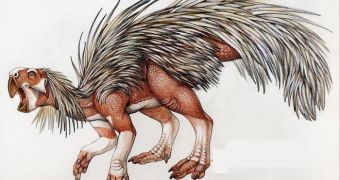Unlike the present-day lizards, dinosaurs had a social behavior. And now the fossils of six young dinosaurs discovered together in a Chinese "nursery" reveal that these animals formed social groups much earlier than previously believed.
"The find sheds light on the life of the beaked dinosaur Psittacosaurus and on the origins of social behavior in its descendants, including the horned Triceratops," said lead researcher Paul Barrett, a paleontologist at Britain's Natural History Museum.
"We don't know very much about the early behavior of dinosaurs in general. This discovery shows the early relatives were already social and living in groups."
The fossilized remains were discovered in the Yixian Formation (northeast China), an extremely rich place in fossils of primitive mammals, birds and feathered dinosaurs. Psittacosaurus is one of the most completely known dinosaurs. Over 10 species of this small herbivore lived in China, Mongolia, Siberia and Thailand 130 million to 100 million years ago, during the early Cretaceous. Its most known relatives are the elephant-sized Triceratops and other horned dinosaurs, famous for their horns and frills around the neck.
The biggest of the young dinosaurs, probably aged 1.5-3 at the time of their death, was about 50 cm (1.6 ft) long from the tip of the nose to its tail and about a kilogram (2.2 lbs) heavy. The adults were about 2 m (7 ft) long and 30 kg (70 lbs) heavy.
"The age range of the fossils suggested they came from different eggs, laid by different parents. The remains formed a nursery with babies from at least two different parents. The baby dinosaurs were probably killed in a volcanic mudflow, but the way the researchers discovered them, lying side by side, indicates they lived in a herd," Barrett said.
"These animals had left the nest and were already hanging out with each other. The remains also help answer a question that has long puzzled paleontologists about whether features such as horns and frills found in Triceratops preceded the development of social behavior. It used to be thought that social behavior only occurred when these animals had their horns and frills. Now we know that they are incidental to it and that the social behavior comes before them." he added.

 14 DAY TRIAL //
14 DAY TRIAL //